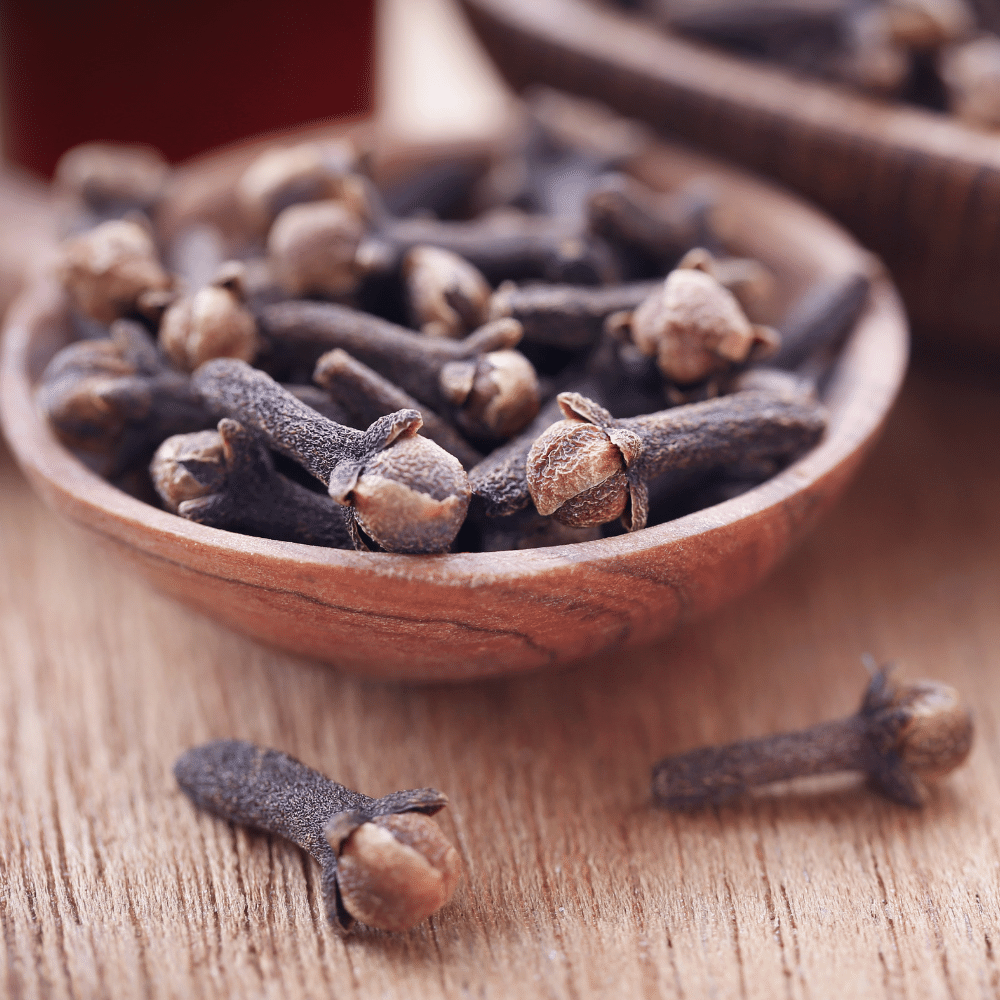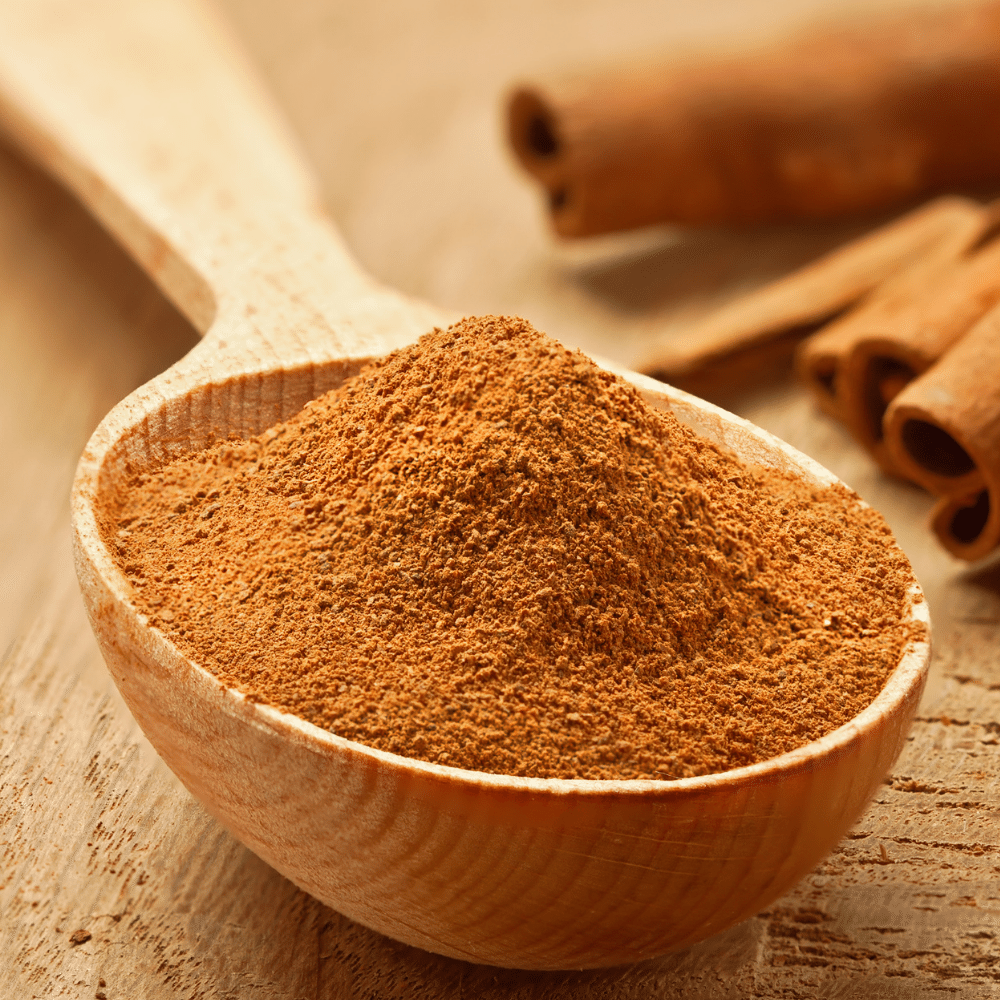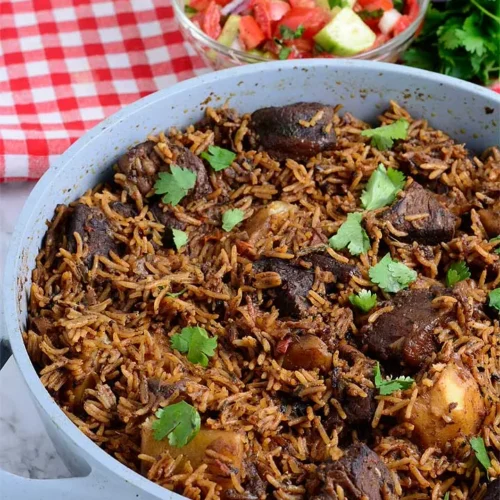As someone who enjoys cooking, I have come to appreciate the role spices play in elevating the flavors of dishes.
Pilau is no exception.
Originating from the Indian subcontinent, Pilau is a flavorful rice dish that combines rice, spices, and various proteins.
In this article, I want to share with you the 10 best spices that bring Pilau to life.
These spices not only bring depth to the dish but also create a unique blend of flavors that make each Pilau recipe different from the other.
Join me as we explore the essential spices that make Pilau a staple in many households.

The 10 Best Spices for Pilau
Pilau is a dish that has been enjoyed for centuries in many different cultures.
The key to making it delicious and flavorful is to use the right combination of spices.
Here are ten of the best spices you can use when making pilau:
Cumin

Cumin is an earthy and warm spice with a hint of citrus.
It is a staple ingredient in many cuisines, adding depth and flavor to dishes. Ground cumin is preferred in recipes where a uniform flavor is desired.
Importance in Pilau flavor
Cumin is a key player in the rich and hearty flavor profile of Pilau.
Its depth and warmth make it a perfect match for the aromatic rice dish, adding instant depth to the overall flavor.
When used in the right amount, cumin enhances the other spices in the dish and creates a harmonious balance of flavors.
Whether used in the initial stages of cooking or sprinkled on top just before serving, cumin is sure to make a noticeable impact on the taste of your Pilau.
Coriander

Coriander is a versatile herb that is known for its tart, citrusy flavor.
The leaves are often used as a garnish, while the dried fruit (coriander seeds) are used as a spice.
The seeds have an earthy, sweet, and tart flavor with a floral aroma that is enhanced when toasted.
Importance in Pilau flavor
Coriander is a refreshing addition to Pilau, balancing out the dish’s richness with its tart and citrusy notes.
The toasted coriander seeds add a depth of flavor to the dish, complementing the other spices and bringing out their individual flavors.
Whether used whole or ground, coriander is a crucial ingredient in making a delicious Pilau dish.
Its unique flavor profile adds an extra layer of complexity to the dish, making each bite a delightful experience.
Cloves

Cloves are an intensely aromatic spice with a subtly sweet flavor.
They pair well with other warm and sweet spices such as cinnamon, nutmeg, and allspice.
Cloves have a slight note of bitterness and astringency that balances the sweetness.
Importance in Pilau flavor
Cloves add warmth and depth to the flavor of Pilau, bringing a sweet and rich character to the dish.
The subtle bitterness and astringency of cloves serve as a perfect balance to the sweetness of the other spices.
The intense aroma of cloves is also a great addition to the overall fragrance of the dish, making it all the more appetizing.
Cinnamon

Cinnamon is a sweet and woody spice with a slight citrusy note and a spicy taste that is comparable to cloves.
There is no difference in flavor between ground cinnamon and cinnamon sticks, but they differ in how they are used in recipes.
Importance in Pilau flavor
Cinnamon brings a sweet and woody flavor to Pilau, contributing to the dish’s overall warmth and depth.
Its slightly citrusy note adds a unique dimension to the dish, making it stand out among other rice dishes.
Whether used as ground cinnamon or cinnamon sticks, this spice is a great addition to Pilau, providing a rich and spicy flavor that pairs well with the other spices in the dish.
Cardamom

Cardamom is a complex spice with a piney, fruity, and menthol-like flavor.
It is a versatile spice that can be used in both sweet and savory dishes, adding a unique dimension to the flavor profile.
Importance in Pilau flavor
Cardamom adds a wonderfully fragrant and complex flavor to Pilau.
Its piney, fruity, and menthol-like flavor pairs well with citrus, making it an ideal addition to this rice dish.
When used judiciously, cardamom contributes a depth of flavor that is unmatched by other spices.
However, too much cardamom can be slightly astringent, so it is important to use it in moderation to avoid overpowering the other flavors in the dish.
Black pepper

Black pepper is a staple spice that is known for its sharp, penetrating aroma and characteristic woody, piney flavor.
It has a hot and biting taste that makes it a versatile ingredient in cooking.
Importance in Pilau flavor
Black pepper adds a sharp, biting heat to Pilau, enhancing the overall flavor profile of the dish.
The sharp, penetrating aroma of black pepper helps to bring out the other spices in the dish, while the characteristic woody, piney flavor adds depth and complexity.
This spice is a staple in many savory dishes, including Pilau, and it is often used to add heat and a bold flavor to the dish.
Tips for using black pepper
To get the most out of black pepper in Pilau, it is important to grind it fresh just before using.
This will help to release the full aroma and flavor of the pepper, making it even more impactful in the dish.
Additionally, you can try adjusting the amount of black pepper you use to suit your taste preferences, starting with a small amount and gradually increasing until you reach the desired level of heat and flavor.
Turmeric

Turmeric is a bright yellow spice that is known for its earthy, bitter, and almost musky flavor, with a touch of peppery spice.
It is also recognized for its bright yellow color that adds vibrancy to any dish.
Importance in Pilau
Turmeric is a key ingredient in many curry powders and is used for its deep and implacable flavor, as well as its vibrant color.
When added to Pilau, it imparts an earthy, bitter, and musky flavor that complements the other spices in the dish.
The bright yellow color of turmeric also helps to make Pilau visually appealing, making it a must-have ingredient in this classic rice dish.
Tips for using turmeric
To get the best results from turmeric, it is important to use it in moderation.
Too much turmeric can overwhelm the other flavors in the dish, making it taste bitter and overpowering.
Additionally, it is important to cook turmeric thoroughly to bring out its full flavor and to help prevent any raw or bitter flavors from dominating the dish.
Nutmeg

Nutmeg is a warm, nutty spice with a slight sweetness and hints of clove and tobacco.
It may also have subtle citrusy notes that add a touch of brightness to the flavor.
Importance in Pilau
Nutmeg’s warm, nutty flavor and sweet notes make it a great addition to Pilau.
It provides a depth of flavor that complements the other spices in the dish and balances out any bitterness or astringency.
Additionally, nutmeg’s hints of clove and tobacco add a unique, complex taste to Pilau that sets it apart from other rice dishes.
Tips for using nutmeg
Whether used in whole or ground form, nutmeg should be used in moderation in Pilau to avoid overpowering the other spices in the dish.
It is best used in combination with other sweet, warm spices like cinnamon and allspice to create a harmonious flavor profile.
It is important to add nutmeg towards the end of cooking to ensure that its flavor does not cook out.
A little nutmeg goes a long way in Pilau, making it an important ingredient that should not be overlooked.
Star anise

Star Anise is a sweet, licorice-like spice that resembles the flavor of aniseed, though the two plants are not related.
It is often used in Chinese cuisine and is a key ingredient in five-spice powder.
Importance in Pilau flavor
Star anise adds a touch of sweetness and a unique licorice flavor to Pilau.
Its presence in the five-spice powder highlights its versatility and ability to work well with other warm and sweet spices.
Tips for using star anise
To avoid overpowering the other flavors, it is best to use star anise in moderation.
It can be added to the dish whole or ground, but whole star anise is more commonly used.
Star anise’s flavor is best infused into the dish when added early in the cooking process, allowing it to meld with the other spices and flavors.
Fenugreek

Fenugreek, also known as methi, is a small, hard seed that is mustard yellow in color.
It has a tangy and bitter taste, reminiscent of burnt sugar.
Importance in Pilau flavor
Fenugreek is a popular seed in Indian cuisine, where it is often used to add a tangy and bitter flavor to dishes.
In Pilau, it can be used to balance out the sweetness of other spices and bring depth and richness to the overall flavor profile.
Tips for using fenugreek
To maximize the flavor of fenugreek, it is best to prepare the seeds properly.
This can be done by toasting the seeds in a dry pan until they are fragrant, or by soaking them in water before using.
When buying fenugreek, look for high-quality seeds that are uniform in color and free of any discoloration or damage.
Fenugreek should be stored in an airtight container in a cool, dry place, away from light and moisture.
When using fenugreek in Pilau, it is best to use it in moderation, as its tangy and bitter flavor can be overpowering if used in too large a quantity.
Conclusion
In conclusion, the spices listed above are essential to creating a delicious Pilau dish.
From earthy and warm cumin to tangy and bitter fenugreek, each spice brings its own unique flavor profile to the dish.
When used in the right combination and in the right proportions, these spices can help elevate the recipe to new heights of flavor and complexity.
Whether you are a seasoned cook or a beginner, experimenting with different spices is a great way to discover new and exciting flavors and to bring variety to your dishes.

The 10 Best Spices for Pilau
Ingredients
- Cumin
- Coriander
- Cloves
- Cinnamon
- Cardamom
- Black pepper
- Turmeric
- Nutmeg
- Star anise
- Fenugreek
Instructions
- Pick your favorite spices from this list to use in your pilau recipe.
- Prepare the rest of your dish, and enjoy!
Jenny has always been passionate about cooking, and she uses her platform to share her joy of food with others. Her recipes are easy to follow, and she loves giving tips and tricks to help others create their own unique culinary creations.

